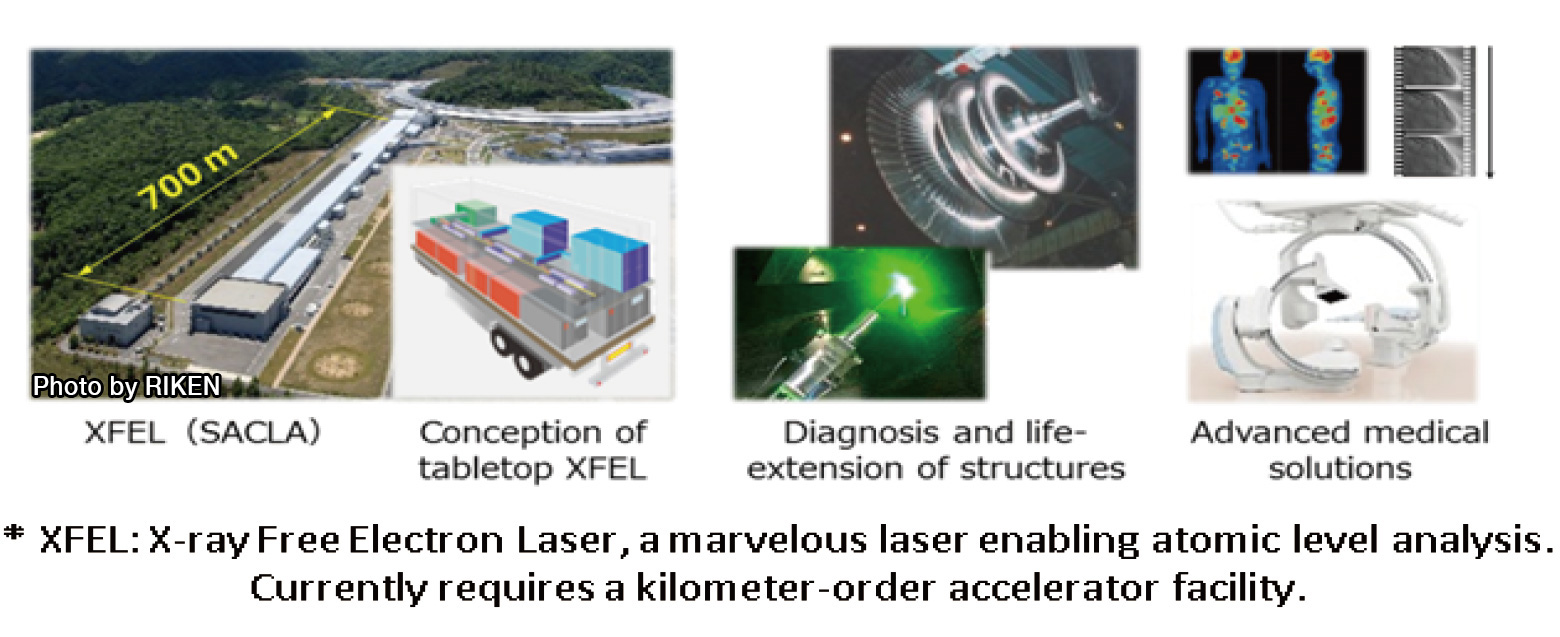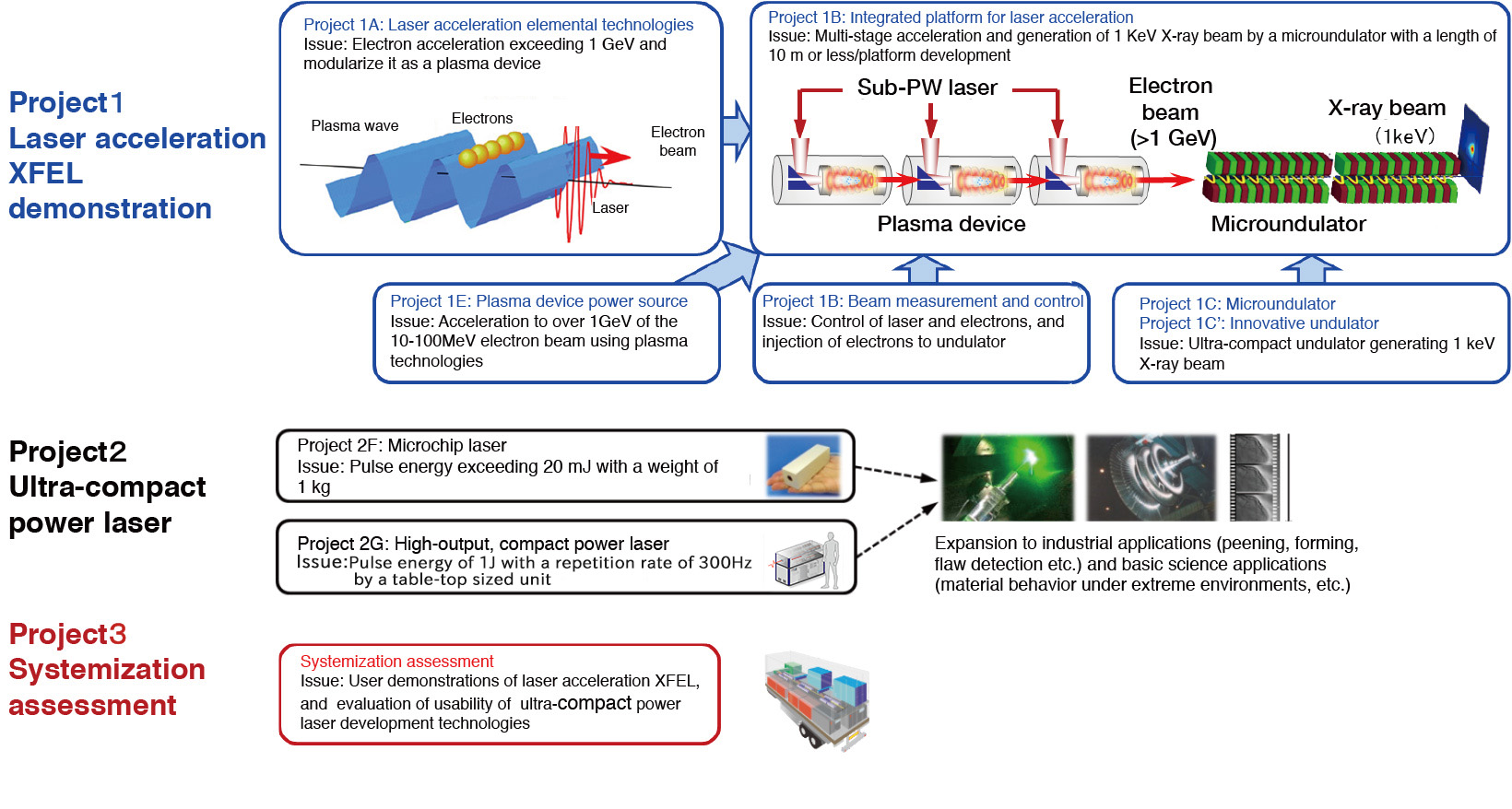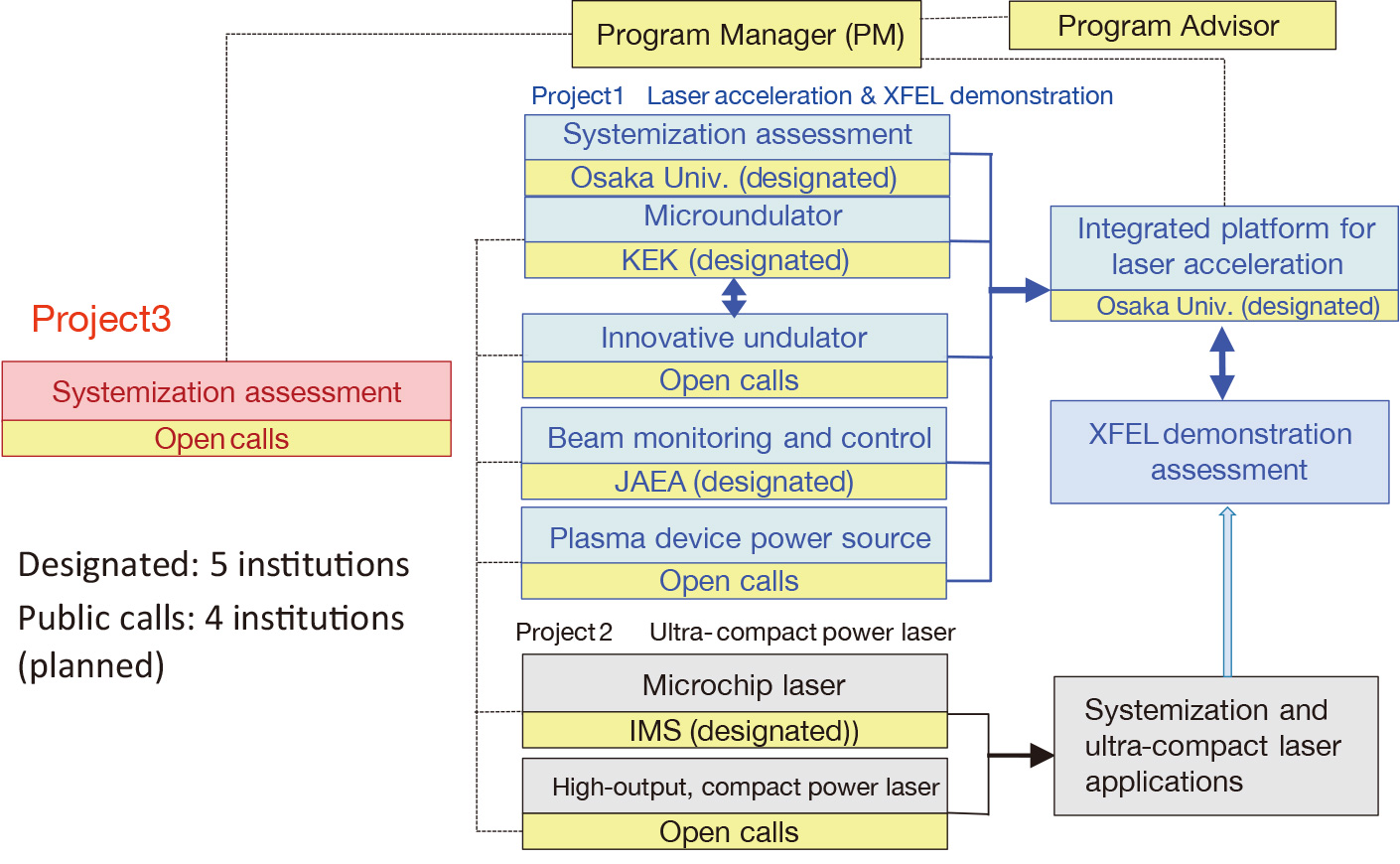
Ubiquitous Power Laser
for Achieving a Safe, Secure and Longevity Society
for Achieving a Safe, Secure and Longevity Society
Program Manager
Yuji Sano
Yuji Sano
1977 Received Master’s degree from the Graduate School of Science and Engineering, Tokyo Tech (majoring in nuclear engineering)
1977 Joined Toshiba Corporation
2006 Senior Fellow, Power and Industrial Systems R&D Center
2014 – present ImPACT Program Manager
( Transferred to JST from Toshiba; Effort: 100% )
1977 Joined Toshiba Corporation
2006 Senior Fellow, Power and Industrial Systems R&D Center
2014 – present ImPACT Program Manager
( Transferred to JST from Toshiba; Effort: 100% )
Profile
For 20 years, supervised technical development relating to laser applications, and promoted development and commercial application of laser peening technology. From 2008 to 2014, served concurrently as Program Officer for the “Photon Frontier Network” of the Ministry of Education, Culture, Sports, Science and Technology (MEXT). Received the Commendation for Science and Technology by the Minister of Education, Culture, Sports, Science and Technology (FY 2008) and many other awards. Ph.D in engineering.
For 20 years, supervised technical development relating to laser applications, and promoted development and commercial application of laser peening technology. From 2008 to 2014, served concurrently as Program Officer for the “Photon Frontier Network” of the Ministry of Education, Culture, Sports, Science and Technology (MEXT). Received the Commendation for Science and Technology by the Minister of Education, Culture, Sports, Science and Technology (FY 2008) and many other awards. Ph.D in engineering.
What's New
2018/10/24[Press Release]
Overview
X-ray free electron lasers (XFEL), which combine the characteristics of X-rays and lasers, provide “miraculous light” that can analyze materials at the atomic level. However, they require large accelerators on the kilometer scale, and at present there is only one up-to-date testing facility in Japan that has achieved this (SACLA). It’s not something that anyone can use easily. Therefore this program will achieve an ultra compact XFEL by combining laser, plasma and accelerator technology in a laser plasma accelerator. If the XFEL can be used anywhere at any time as a result, it will come to be used in a wide range of fields such as industry and medical care, making it possible to achieve a society where people enjoy longevity with safety and security. 

Disruptive Innovation
Keys to breakthrough
- Using plasma waves with a precipitous electrical field created by laser to accelerate electrons will reduce the acceleration length to 1/1000. The functions of an XFEL can be achieved at the tabletop level.
- Laser ultra‐miniaturization will be made possible through the use of unique Japanese microchip laser and ceramic laser media technologies. The gymnasium size can be reduced to a desktop size, and the desktop size can be reduced to one fitting in the palm of the hand. Applications in industry and medical settings will be pursued.

The Challenges for the PM and the Impact of Success
Overview and background
- Laser, plasma and accelerator technologies will be integrated to achieve a compact, high‐output, ubiquitous quantum beam technologies and units. The units will have applications in equipment diagnosis, security, advanced medicine and other fields, and will help to achieve a safe, secure and longevity society.
Impact on industry and society in the event of achievement
- Will bring the use of an XFEL* (a National Critical Technology) close at hand. Atomic level analysis will revolutionize industry and will find applications in ubiquitous equipment diagnosis and repair, biological imaging, and quantum beam radiotherapy, anytime, anywhere.

Scenario for Success and Achievement Targets
Methods of resolution for success (Approach)
- A platform with electron accelerator using laser plasma (a field in which Japan is a leader) at its core, which will combine laser, plasma and accelerator technologies, will be built.
- With this platform, a co‐creation organization where specialists from various technical fields including industry can conduct complementary research and development will be established to accelerate the development.
- The study of user needs and evaluation of development systems will be contracted to a third party to shape potential market needs and development specifications will be formulated with the participation of end users.
Achievement targets
- Development of an ultra‐compact electron accelerator using lasers (> 1 GeV, < 10 m).
- Generation of X‐ray beam from accelerated electrons with a microundulator (1 keV).
- Development of a compact, lightweight, high‐output microchip laser (> 20 mJ, < 1 kg).
Risks
- Europe and the U. S. are pursuing research and development with abundant funding. The ImPACT Program is working to integrate fields of laser, plasma and accelerator, and specialized for stable low‐energy electron acceleration to generate X‐ray beam, and to develop industrial applications.
Overall R&D Program Structure Created by the PM

Implementation Structure as Assembled by the PM
Keys of the implementation structure
- Advisors from industry, academia and government will be invited. An outside study will be commissioned to quickly respond to potential market needs.
- In the latter half of the project period, the achievements of each institution will be assembled into the platform.
Approach to selection of institutions
- Global top‐level institutions will be selected. If implementation by other institutions is difficult, the institution should be designated. For other technologies, a wide variety of ideas can be attracted through an open bidding process.
- Osaka Univ. has achieved the world’s most stable laser electron acceleration in “Development of ultrafast atomic‐scale imaging device using laser‐plasma‐driven single electron bunch” project conducted as a CREST team type research. It has a proven track record of establishing an integrated platform for laser acceleration of electrons.
- KEK developed a world-standard in-vacuum undulator, and also leads the world in the field of micro-undulator technology.
- The Japan Atomic Energy Agency has the best track record in the world for developing flying mirrors, a plasma element, and excels in their measurement and control.
- The Institute for Molecular Science was the first institution in the world to successfully achieve megawatt-output pulse laser oscillation using a microchip structure, and it is a world leader in this field.

Organization
The Cabinet Office
ImPACT: Impulsing Paradigm Change through Disruptive Technologies Program
ImPACT Program Manager
Yuji Sano
ImPACT: Impulsing Paradigm Change through Disruptive Technologies Program
ImPACT Program Manager
Yuji Sano
Associate Program Manager
Takahiro Miura
Takahiro Miura

